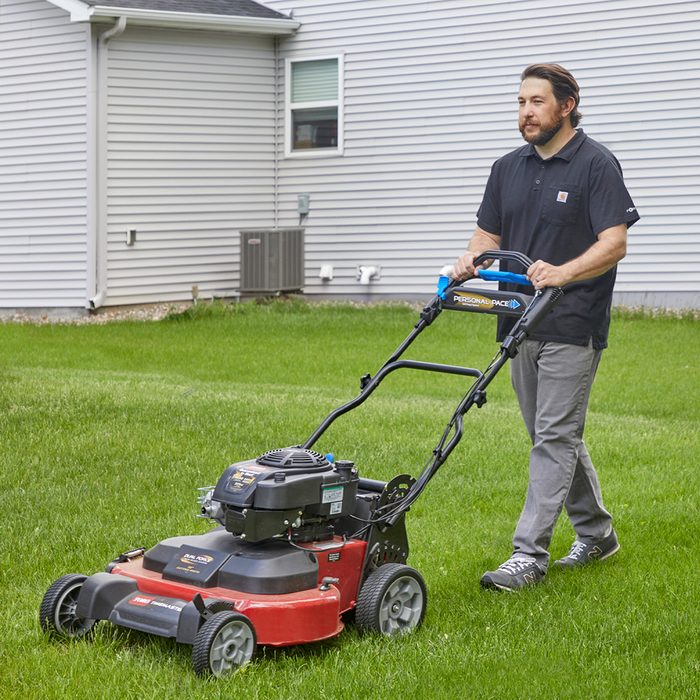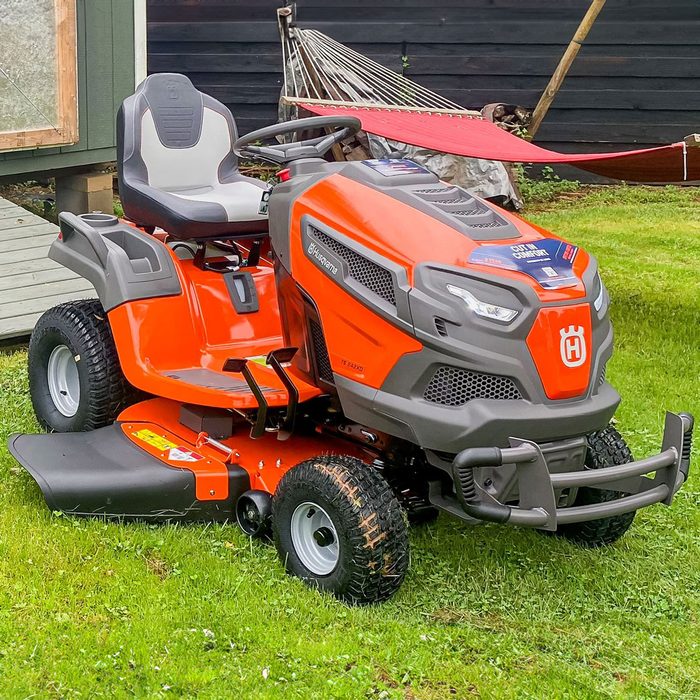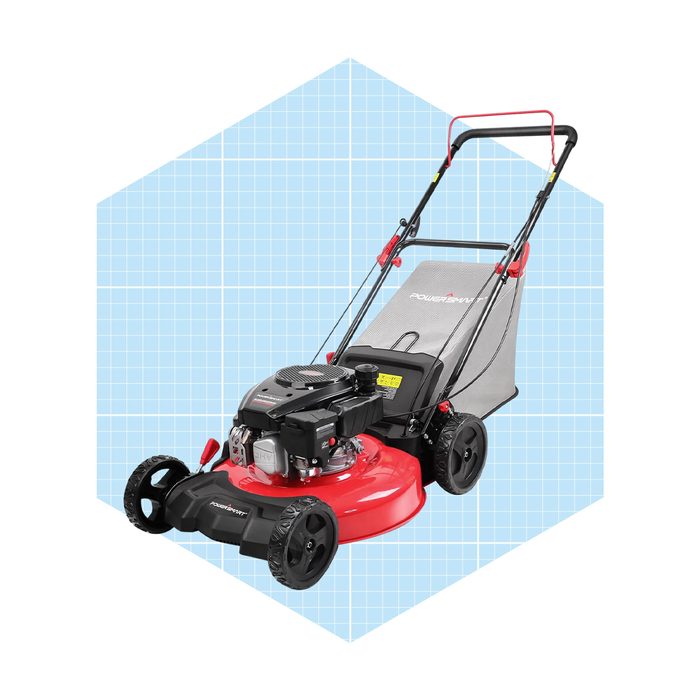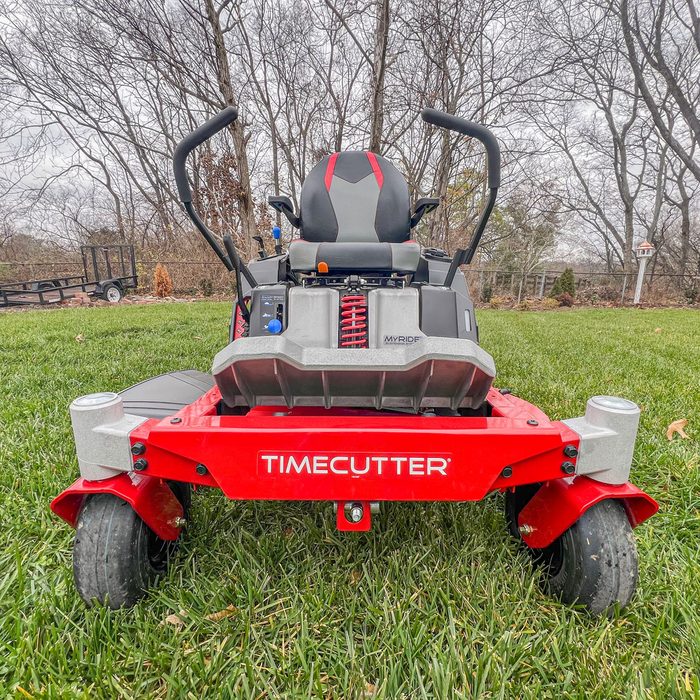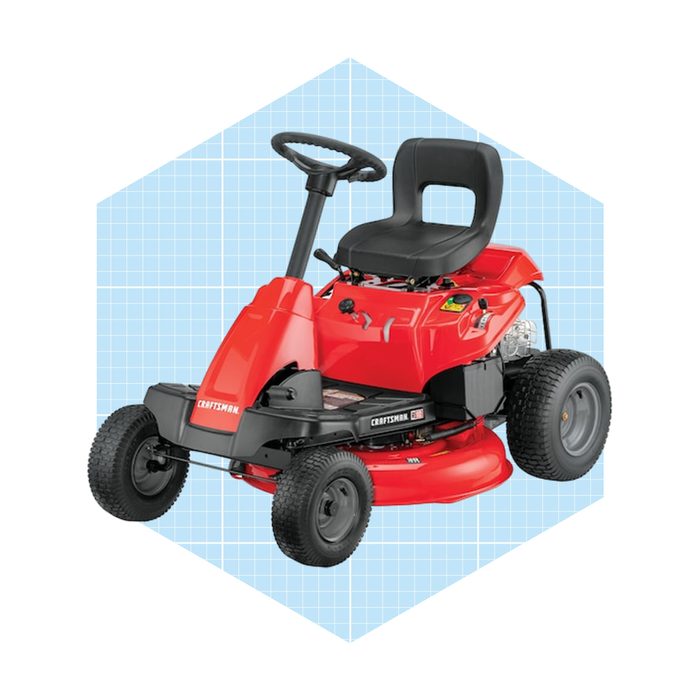ALEX KRONK FOR FAMILY HANDYMAN
ALEX KRONK FOR FAMILY HANDYMAN
Pros:
-
MyRide suspension system
-
Wide cutting deck
-
Easy to use
-
Inexpensive
Cons:
-
Requires consistent maintenance
-
Difficult to store
The Toro TimeCutter SS4225 is my favorite zero-turn mower on the planet. I recently wrote about my experience testing the TimeCutter and was ecstatic about the new MyRide suspension system. MyRide includes the footplate and the seat attached to the same suspension system as a single unit, meaning any bumps at your feet or upper body are completely absorbed. Basically, this mower feels like floating on air.
We let Tyler Graham, owner of The Lawn Review, take this one for a spin on his ½-acre yard for a few weeks and he described it as “surprisingly fast, incredibly even cut and super comfortable”.
Not only is this mower supremely comfortable and easy to operate but it is built to shred through your lawn as well. The Toro TimeMaster has a 42-inch cutting deck and a 22.5 HP engine that makes grass, leaves and debris disintegrate into a fine mulch. The TimeCutter is a classic zero-turn mower that continues to assert itself as the leading residential zero-turn mower in affordability, usability and reliability.
VIA MERCHANT
VIA MERCHANT
Pros:
-
Budget-friendly
-
Quality motor
-
Wide cutting deck
-
High seat back
Cons:
-
Manual transmission
-
Undersized wheels
Riding lawn mowers are great tools and absolutely necessary for folks with large yards, but not everyone can afford premium riding mowers. For those of us who are budget-conscious but need to get a large yard cut, there are still options.
That’s where the Craftsman R110 gas riding lawn mower comes in as a great, inexpensive alternative to traditional riding mowers. With a 30-inch cutting deck and 10.5 HP engine, you still get reasonable power and performance for a significantly lower cost. One thing I love about the Craftsman R110 is that it comes with a Briggs & Stratton engine, a quality manufacturer of small engines that populate just about every mower on the planet. Craftsman is experienced with making high-quality electric tools.
High quality, lower cost–this is exactly what you’re looking for as an alternative to the pricey riding mowers that weigh heavily on your budget. Hoping for something even lighter on the wallet? Read our guide to the best inexpensive lawn mowers.
What To Look For When Buying a Gas Mower
For all the advancements with electric lawn mowers in recent years, there’s still nothing quite like the power and range of a gas-powered lawn mower.
A typical gas mower provides as much power as high-end electric mowers, without being tethered to a power cord or needing a recharge halfway through the job. Gas mowers also last a long time. With proper maintenance, many gas-powered mowers can see 10 to 20 years of service.
Like all technologies, they do have downsides—primarily noise, maintenance and fuel storage. But their power range and durability allow gas mowers to remain perennial bestsellers.
If you’ve weighed the differences between electric vs. gas lawn mowers and decided on a gas-powered mower, here are some features to consider:
- Style: Gas lawn mowers come in push and riding models. Push models are best for yards about one-third to one-half of an acre. Blades can be rotary or reel. Rotary mowers spin flat blades horizontally, cutting the grass like a machete, while cylindrical reel mowers snip it like scissors. Rotary mowers are better for tall grass and debris like sticks, while reel blades are the choice for short, clean, highly-maintained lawns.
- Engine: All new mowers sold in the U.S. are four-stroke engines, meaning the gas isn’t mixed with oil. (California recently passed a law phasing out the sale of gas-powered lawn equipment.)
- Deck width: The cutting deck holds the mower blades. A wider deck means fewer passes around the yard and less mowing time. But a deck that’s too wide can be problematic for smaller yards, or those with trees, bushes and other obstacles to navigate. Mowers with larger decks also need a bigger engine.
- Maintenance: There’s no way around this. Besides mower blade sharpening and cleaning out grass clippings, you’ll also have to deal with fuel, oil filters and annual tune-ups. Luckily, most mowers are relatively DIY-friendly, so if you’re comfortable working with small engines you can do most of the work yourself. If not, plenty of small-engine shops offer service.
- Features: Look for things like self-propelled drive on push mowers and vibration reduction on lawn tractors. Self-propelled mowers can also be front-wheel, rear-wheel or all-wheel drive. Other features such as phone and glove storage, cup holders or easy-start options are nice to have.
- Accessories: Most mowers, but not all, come with a bagging system. Many have other options as well. Riding mowers offer a range of mowing accessories that can help them be useful in snow, for transportation and even for hauling.
- Price: Push mowers targeted at homeowners run from $200 to $800. Riding mowers range from $1,300 to $6,000. But there are plenty of models that fall outside even those broad ranges.
Why You Should Trust Us
As someone who used to mow lawns professionally, I have mowed thousands of lawns in my life. Over the past few years, I have explored gas-powered, battery-powered and electric lawn tools and am nerdy enough to get excited about any type of lawn mower. As a DIY lawn enthusiast, I care about the performance of a lawn mower and having a high-quality experience while spending a few hours per week outdoors. This makes me, by definition, a lawn mower snob.
We Have Used Dozens of Gas Mowers
As a former landscaper, I’ve put my hands on dozens of gas mowers. I have used or owned just about every brand: Troy-Bilt, Craftsman, Husqvarna, Toro, John Deere, Cub Cadet, Ariens and many more. To put these to the test, it is all about evaluating the performance of the mower, ease of use and ensuring the price is appropriate. Testing mowers under a variety of environments such as cool-season grass, warm-season grass, leaves, thick brush and across all sizes of lawns is the best way we’ve gauged which gas mowers are the best to use.
FAQ
Is a gas or battery lawn mower better?
Gas mowers tend to be better for larger yards because they can run for much longer without needing to recharge. Battery mowers are more convenient and require little to no maintenance. The choice depends on your unique needs.
Do gas mowers last longer than electric mowers?
One key point in the gas vs. electric mower debate has to do with run time. A tank of gas will usually give an operator more running time than a single charge for an electric mower. And while early electric mowers were often less durable than their gas-powered counterparts, the industry is making big improvements to the products. In early 2023, John Deere announced its first electric riding lawn mower, a zero-turn model no less.
What type of mower gives the best cut?
Zero-turn mowers generally give the best cut because they are very wide and have many blades, so missing blades of grass are minimized.
What is the quietest gas lawn mower?
Push or self-propelled gas mowers tend to be the quietest because they have the smallest motors.
What kind of gas should you use for your lawn mower?
Your mower requires clean, fresh unleaded gasoline with a minimum of 87 octane. Just take your approved gasoline storage can to the gas station with you can fill it up for your mower.
How to drain the gas from a mower
The easiest way to drain the gas from your lawn mower run the engine until the gas is gone. You can also siphon it out of the tank, or you can pour it out of the tank into a gas can (you’ll need a funnel and probably a second set of hands to help.
Are gas lawn mowers going away?
Any engine powered by gasoline emits carbon and other pollutants into the atmosphere. The Environmental Protection Agency found that gas-powered lawn mowers account for five percent of the total air pollution in the United States.
For now, there’s no shortage of gas-powered equipment available. However, that’s starting to change. The state of California passed legislation in 2021 that will ban the sale of new gas-powered lawn equipment by 2024 (to help ease this transition, California has set aside $30 million for a rebate program to offset the cost of new zero-emission equipment.) Some cities are starting to implement no-mow days to help control air pollution. Honda announced last year that it will stop making gas-powered lawn mowers.
Dan Stout, freelance writer, contributed to this piece.




















